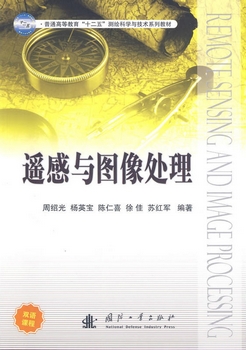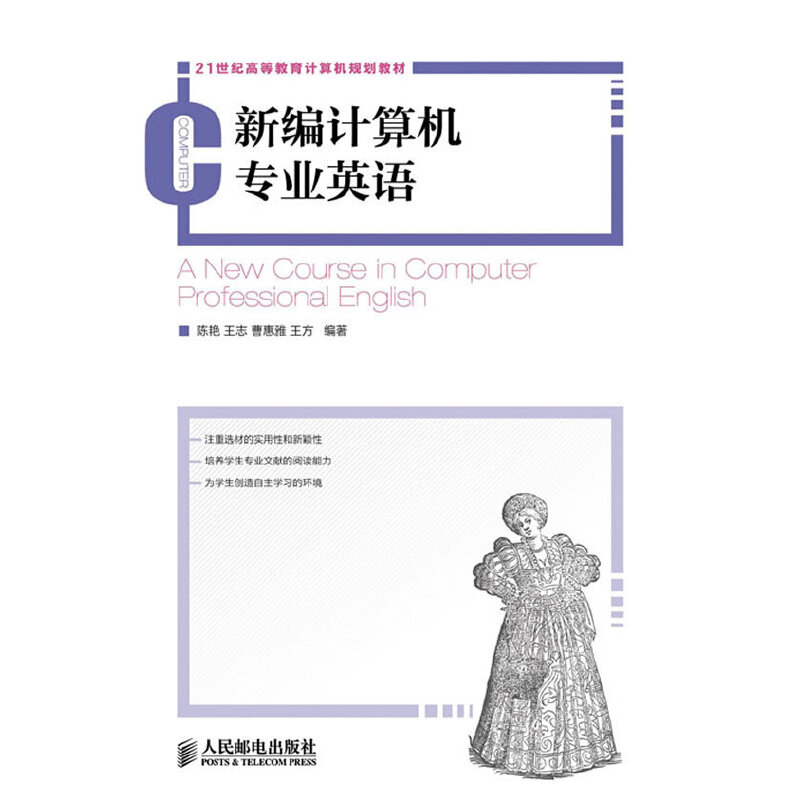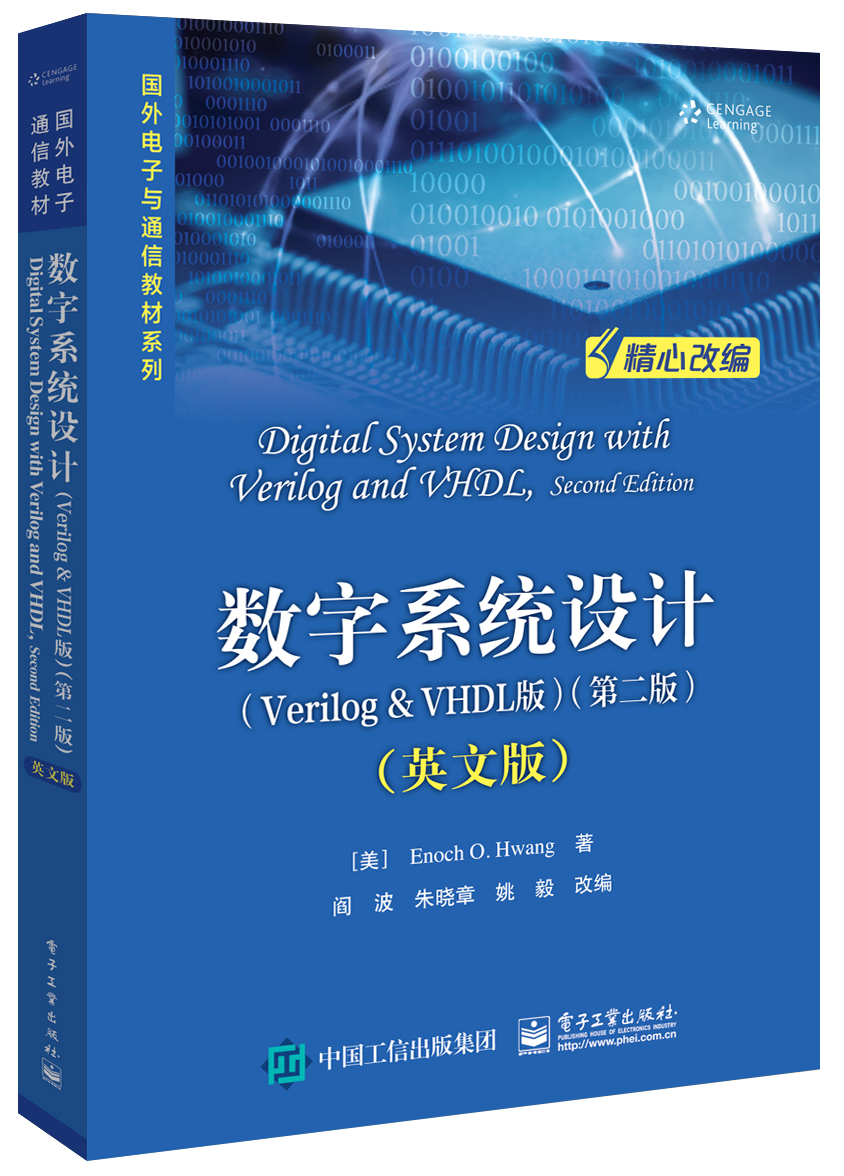遥感与图像处理
定价:¥26.00
作者: 周绍光 杨英宝 陈仁喜 徐佳 苏红军
出版时间:2014-06
出版社:国防工业出版社
- 国防工业出版社
- 9787118094466
- 184819
- 2014-06
- TP751
内容简介
周绍光、杨英宝、陈仁喜、徐佳、苏红军编著的《遥感与图像处理(普通高等教育十二五测绘科学与技术系列教材)》以英语的形式阐述了遥感的基础知识和遥感图像处理的典型方法。主要内容包括:遥感的定义,典型遥感系统的组成;常用的遥感传感器及平台,遥感影像的分辨率,多光谱扫描和热成像原理,图像几何失真的原因及校正方法;微波遥感的基础知识介绍;遥感影像处理、分析和解译的经典方法及部分先进的技术,利用ERDAS和MATLAB进行影像处理和分析的具体步骤;遥感在土地利用、土地覆盖及城市热环境等方面的应用。
除了作为课程教材之外,本书还可以作为研究人员学习专业英语的参考书。
除了作为课程教材之外,本书还可以作为研究人员学习专业英语的参考书。
目录
Chapter 1 Introuduction to Fundamentals 1.1 Definition of Remote sensing 1.2 Electromagnetic Radiation 1.3 The Electromagnetic Spectrum 1.4 Interactions with the Atmosphere 1.5 Radiation-Target Interactions 1.6 Passive vs. Active Sensing 1.7 Characteristics of Images ExercisesChapter 2 Satellites and Sensors 2.1 On the Ground, In the Air, In Space 2.2 Satellite Characteristics: Orbits and Swaths 2.3 Spatial Resolution, Pixel Size, and Scale 2.4 Spectral Resolution 2.5 Radiometric Resolution 2.6 Temporal Resolution 2.7 Cameras and Aerial Photography 2.8 Muhispeetral Scanning 2.9 Thermal Imaging 2.10 Geometric Distortion in Imagery 2.11 Weather Satellites/Sensors 2.12 Land Observation Satellites/Sensors 2.13 Marine Observation Satellites/Sensors 2.14 Other Sensors 2.15 Data Reception, Transmission, and Processing ExercisesChapter 3 Microwave Remote Sensing 3.1 Introduction 3.2 Radar Basics 3.3 Viewing Geometry and Spatial Resolution 3.4 Radar Image Distortions 3.5 Target Interaction and Image Appearance 3.6 Radar Image Properties 3.7 Advanced Radar Applications 3.8 Radar Polarimetry 3.9 Airborne versus Spaceborne Radars 3.10 Airborne and Spaceborne Radar Systems 3.10.1 Airborne Radar Systems 3.10.2 Spaceborne Radar SystemsChapter4 Image Interpretaion&Analysis 4.1 Introduction 4.2 Elements of Visual Interpretation 4.3 Pre-processing 4.3.1 Radiometric Corrections 4.3.2 Correction of Geometric Distortion 4.4 Image Subsetting and Mosaicking 4.4.1 Image Subsetting 4.4.2 Image Mosaicking 4.5 Image Enhancement 4.5.1 Image Histogram 4.5.2 Density Slicing 4.5.3 Linear Enhancement 4.5.4 Piecewise Linear Enhancement 4.5.5 Look-up Table 4.5.6 Nonlinear Stretching 4.6 Spatial Filtering 4.6.1 Neighborhood and Connectivity 4.6.2 Kernels and Convolution 4.6.3 Image Smoothing 4.6.4 Median Filtering 4.6.5 Edge-Detection Templates 4.7 Multiple-Image Manipulation 4.7.1 Band Ratioing 4.7.2 Vegetation Index 4.8 Image Transformation 4.8.1 PCA 4.8.2 Tasseled Cap Transformation 4.8.3 HIS Transformation 4.9 Image Filtering in Frequency Domain 4.10 Fundamentals of Classification 4.10.1 Spectral Class versus Information Class 4.10.2 Distance in the Spectral Domain 4.11Unsupervised Classification 4.11.1 Moving Cluster Analysis 4.11.2 Iterative Self-Organizing Data Analysis 4.11.3 Agglomerative Hierarchical Clustering 4.11.4 Histogram-Based Clustering 4.12Supervised Classification 4.12.1 Procedure 4.12.2 Per-Pixel Image Classifiers 4.13 Unsupervised and Supervised Classification 4.14 Other methods for classification 4.14.1 Mean Shift Clustering 4.14.2 Fuzzy Image Classification 4.14.3 Neural Network 4.14.4 Decision Tree 4.15 Data Integration and Analysis ExercisesChapter 5 Applications 5.1 Introduction 5.2 Land Use & Land Cover ( Rural / Urban) 5.2.1 Basic Concepts 5.2.2 Change Detection Steps 5.2.3 Common Satellite and Sensor in LULC Research 5.2.4 Case Study 5.3 Urban Thermal Environment 5.3.1 Introduction 5.3.2 Case study-Yangtze River Delta ExercisesChapter 6 ERDAS User' s Guide 6.1 Introduction to ERDAS 6.2 Getting Started 6.3 Viewer 6.4 Image Enhance 6.5 Image Rectification 6.6 Unsupervised Classification 6.7 Supervised Classification1 Matrix Indexing2 Function Imadjust3 Logarithmic and Contrast-Stretching Transformation4 Generating and Plotting Image Histograms5 Linear Spatial Filtering6 Basic Steps in DFT Filtering7 Lowpass Frequency Domain Filters8 Dilation and Erosion9 Edge Detection Using Function edgeReferences





